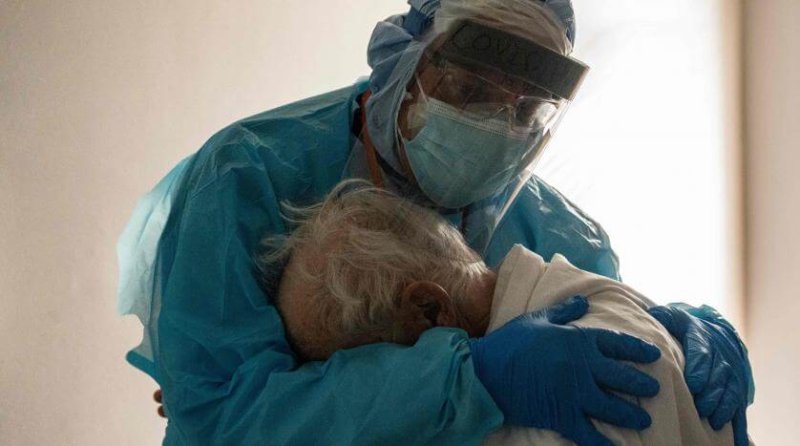“Most of what I’m seeing is behind closed curtains, and the general public isn’t seeing this side of it,” says Todd Rice, a critical care and pulmonology specialist at Vanderbilt University Medical Center. Even “families are only seeing a little bit of it,” he says. As a result, most of us have been “protected and sheltered from seeing the worst of this disease.”
…
The majority of terminally ill Covid-19 patients typically spend their last days or weeks isolated in ICUs to keep the virus from spreading… So what have these 500,000 people endured as the infection took over and their bodies failed?
The torture of Covid-19 can begin long before someone is sick enough to be admitted to a hospital intensive care unit.
Since the coronavirus attacks the lungs, it hampers the intake of oxygen. People with worsening Covid-19 typically show up in the emergency room because they are having trouble breathing.
As their lungs deteriorate further, they have a harder and harder time getting enough oxygen with each breath, meaning they need to breathe faster and faster — up from an average of about 14 times per minute to 30 or 40. Such gasping can bring about a very real sense of panic.
Imagine trying to breathe through a very narrow straw, says Jess Mandel, chief of pulmonary, critical care, and sleep medicine at UC San Diego Health. “You can do that for 15 to 20 seconds, but try doing it for two hours.” Or for days or weeks.
Patients struggling through low oxygen levels like this have told Kenneth Remy, an assistant professor of critical care medicine at Washington University School of Medicine in St. Louis, that it feels like a band across their chest or that their lungs are on fire. Or like a thousand bees stinging them inside their chest. Others might have thick secretions in their lungs that make it feel like they are trying to breathe through muck. Many people say it feels like they’re being smothered.
…
“One of the[se] patients specifically told me before I put the breathing tube in, ‘Let everyone know that this is real, my lungs are on fire. It’s like there’s bees stinging me. I can’t breathe. Please let them know to wear a mask … because I wouldn’t wish this on my worst enemy.’”































